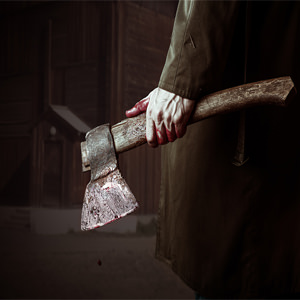Creepy History: True Story Of Jack The Ripper

The fog comes in a cold night. The area is dark, with nothing but gas lamps to light the way.In the wake of industrialization fed by the burning of coal, 1888 London is a very dirty city.
Many people are desperately poor, especially in London’s East End.The influx of immigrants from Ireland, Russia and Eastern Europe makes cramped quarters even less livable.
The fates of women and children are especially unfortunate, in a world where their rights are subjected by men.
And in this setting comes a series of confusing and frightening murders. In order to fully understand the full story of Jack the Ripper, the stage has to be properly set. It is perhaps too easy to see the acts of a serial killer as more predictable, given the publicity of more recent murderers.
But the 1888 Whitechapel Murders are exceptional.
They came at a time when newspapers were rising dramatically in popularity, and their low cost made widespread literacy more accessible. Everyone, after all, loves a good story. Even if it can never be solved.
Dangerous prostitution
Late-Victorian London, particularly on the East End, could be exceptionally dangerous. Working class women who could not marry someone to provide for them had only two real options for income: service and prostitution. If they could not establish a good reputation, prostitution was all they had.
So there were women who stood in the dark alleyways at night, beckoning to men, encouraging them to waste an hour or so before they went home. Because prostitution was widely derided and women had such little power, a prostitute had no recourse if her client refused to pay, beat her or even murdered her.
Flummoxed police
Although many murders have since been attributed to Jack the Ripper, only five are genuinely believed to be the work of the serial killer. They started with Mary Ann Nichols, who was discovered on August 31st on the street with her throat and lower abdomen slashed.
The murders increased in severity, and some of the victims were found with larger cuts and even missing organs. The deaths ended with Mary Jane Kelly, who was found on November 9th at her home with a long slit down her torso, with most organs removed and her face destroyed.
Although police were stumped by the case, they had a few ideas to go on. Percy Clark, assistant to the pathologist who examined all five victims, believed that only three women were undeniably murdered by the same person. He claimed that the other two might have been performed by a copycat. But, despite systematic canvassing of the area by London police, no real suspects emerged.
Ambitious journalists
The best known letter was sent “from hell,” where the author sent part of a kidney and indicated that he had eaten the other half.
Another letter identified the killer’s moniker as “Jack the Ripper.” The nickname stuck. The police did not consider the letters to be conclusive evidence. But, some believe that journalists may have written one or more of the letters, seeking to prolong the controversy.
In the end, the mystery remains. Jack the Ripper was never caught, and all leads ran to dead ends. The murders stopped just as quickly as they begun, and life moved on. The world, however, did not. Jack the Ripper lives on in fiction and fantasy to this day.












